Hereford & District Working Boys' Home and Certified Industrial School, Hereford
A Home for Working Boys' was established at Hereford in 1874 by a committee of gentleman convened by Arthur G. Levason. The Home's first premises were a small rented house on Commercial Road, Hereford, which was formally opened by the Bishop of Hereford on April 29th, 1874.
Funds were raised to provide permanent premises and a two-acre site was acquired at Bath Street, Hereford. On June 14th, 1876, the foundation stone for the new building was laid by Mrs Atay. The establishment was opened on February 1st, 1877. Nine months later, on November 1st, it was certified to operate as an Industrial School, accommodating up to 50 boys, aged 8 to 13 years at their date of admission.
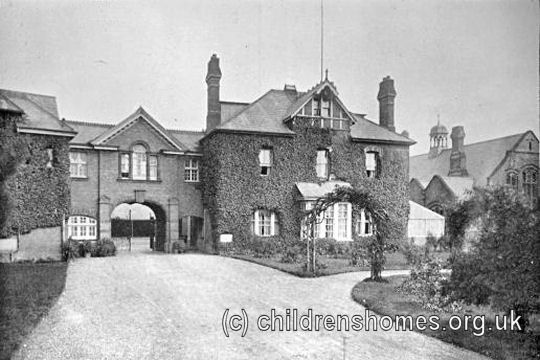
Hereford and District Industrial School, c. 1910. © Peter Higginbotham
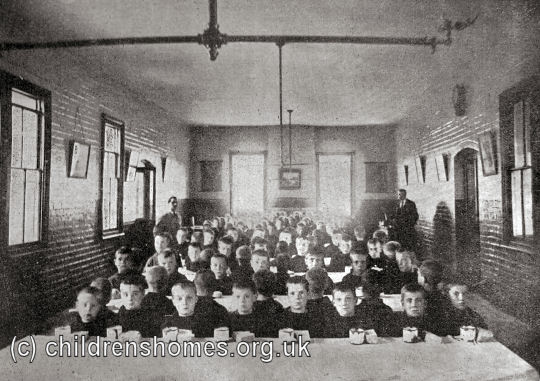
Hereford Boys' Industrial School, dining hall. © Peter Higginbotham
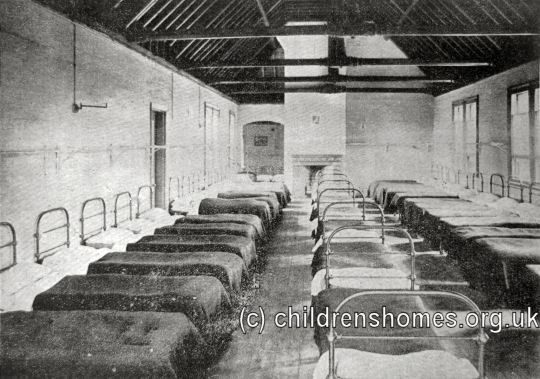
Hereford Boys' Industrial School, dormitory. © Peter Higginbotham
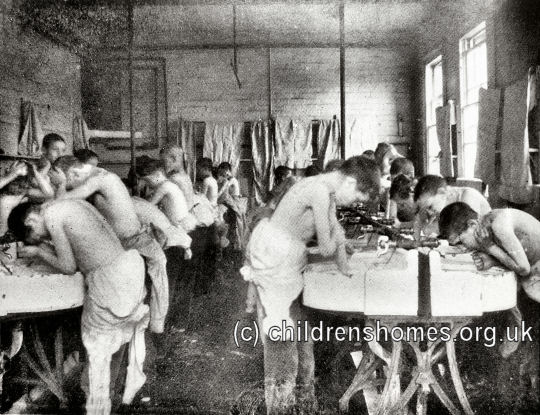
Hereford Boys' Industrial School, washroom. © Peter Higginbotham
The initial superintendent and matron in the new building were Mr and Mrs Cuffe but they were replaced in 1878 by Mr and Mrs Keys. The Keys, in turn, were succeeded in December 1880 by Mr Edwin Horth and his wife Elizabeth. The Horths were to remain in charge for the next 36 years.
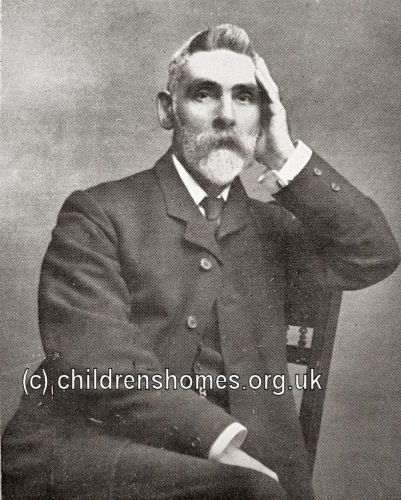
Hereford Boys' Industrial School, Superintendent Edwin Horth. © Peter Higginbotham
The industrial training provided mainly consisted of wood chopping, basket making and gardening, with some of the inmates employed as errand and house boys. Tailoring was later added to the list. The boys also helped in the house and laundry work.
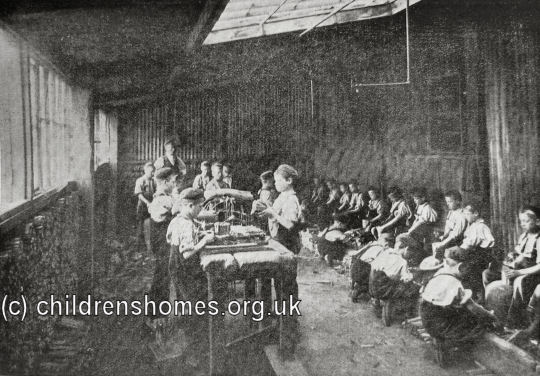
Hereford Boys' Industrial School, wood-chopping. © Peter Higginbotham
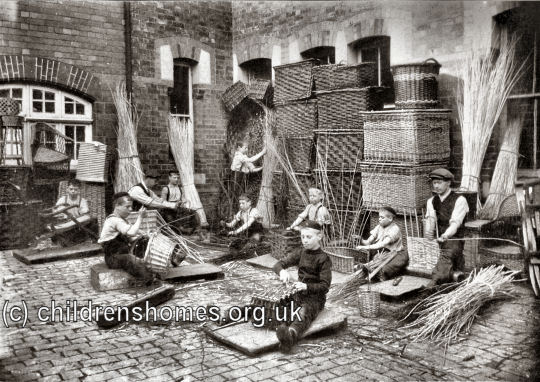
Hereford Boys' Industrial School, basket weaving. © Peter Higginbotham
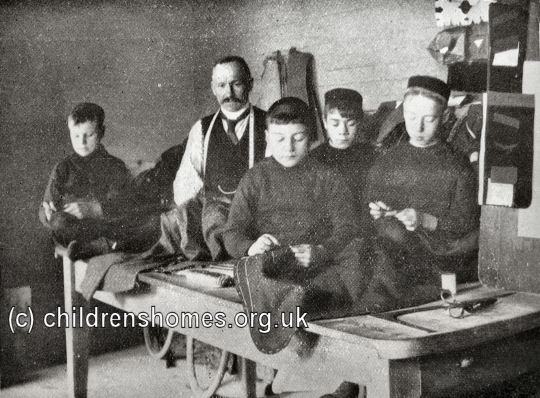
Hereford Boys' Industrial School, tailoring. © Peter Higginbotham
The tailoring skill of some of boys was sufficient for them to win medals for their work at the annual "Tailor and Cutter" Exhibition.
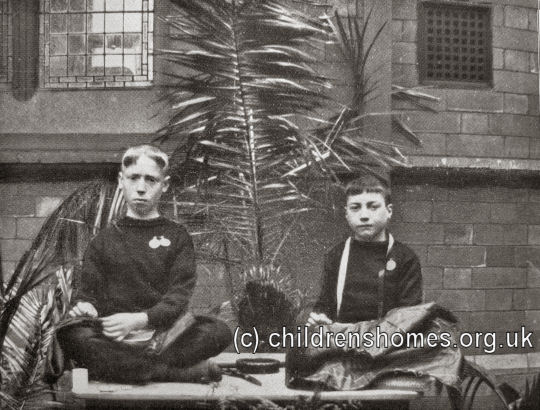
Hereford Boys' Industrial School, tailoring award winners. © Peter Higginbotham
On 8th August, 1886, the foundation stone for a new wing was laid by Mrs Arthur G. Levason. It provided a new school room, workshops and an infirmary. Ten years later, as a result of a £1,000 gift by Mrs Meadows of Aylestone Hill, the Meadows Memorial Hall was added to the premises. Following these and other additions, the School's accommodation increased to 125 places.
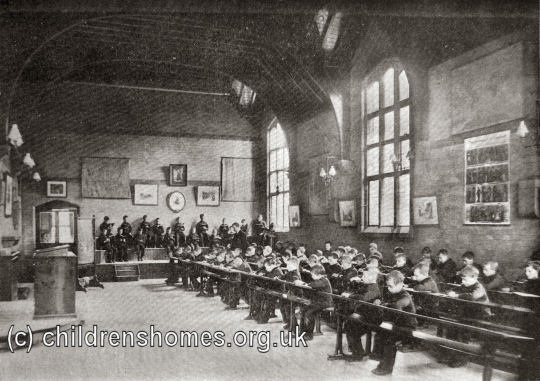
Hereford Boys' Industrial School, new school room. © Peter Higginbotham
In 1896, the numbers of boys allocated to the various industrial training tasks was: basket-making, 25; shoemaking, 8; tailoring, 12; gardening, 14; wood-chopping, 14. About a dozen boys were employed in the washhouse and laundry, and half that number in the house. Boys went out to shops and as servants to gentlemen's houses in the city. A brass and reed had now been started. A drill-sergeant came once a week and took the boys for physical drill. There are two small play-yards with a covered playroom for wet weather. The boys played cricket and football on the common and went for walks about once a week. During the winter months, there were weekly entertainments, either magic lantern shows or concerts. The school had a plunge bath (15 ft. by 14 ft.) which was about to be extended. The boys also made use nearby swimming baths and swam in the Wye in summer.
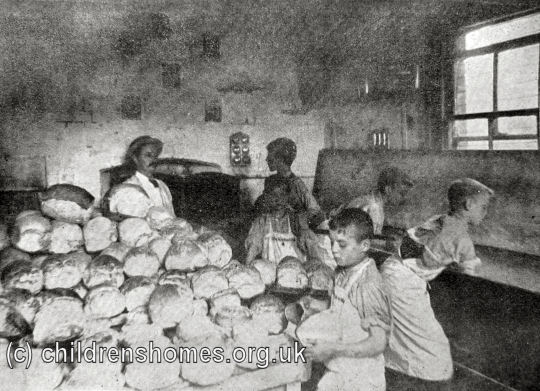
Hereford Boys' Industrial School, bakery. © Peter Higginbotham
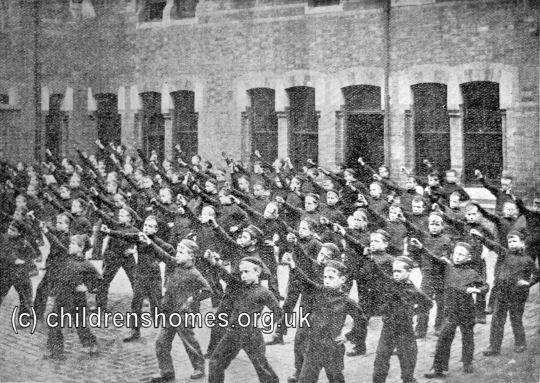
Hereford Boys' Industrial School, exercise drill. © Peter Higginbotham
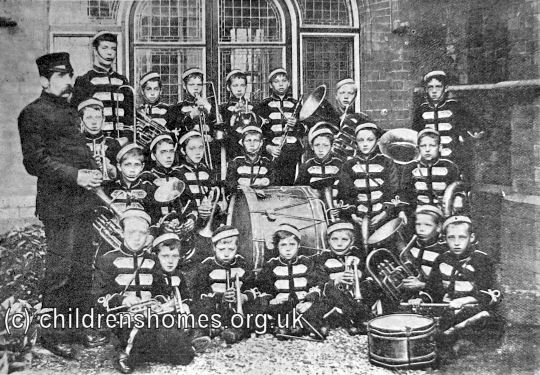
Hereford Boys' Industrial School, band. © Peter Higginbotham
Singing was a popular activity at the School and a number of the boys became members of the choir at the town's St Peter's Church.
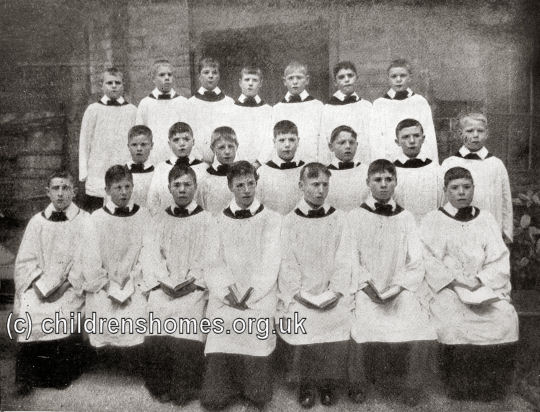
Hereford Boys' Industrial School, boys in St Peter's Church choir. © Peter Higginbotham
After the Horths retired in 1916, their son, Frederick J Horth, took over as superintendent.
The School closed in May 1933. The building was subsequently adopted as offices for the Herefordshire County Council offices, then was later occupied by Hereford College of Arts. in 2019, the site was ubdergoing a major redevelopment.
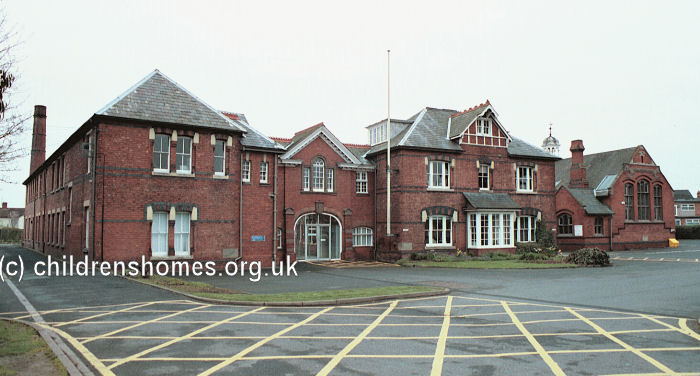
Former Hereford Boys' Industrial School, 2001. © Peter Higginbotham
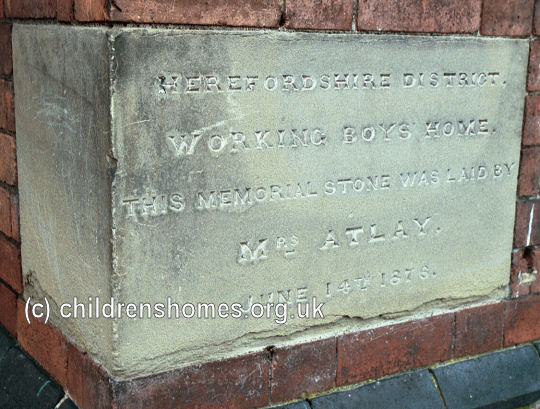
Former Hereford Boys' Industrial School, 2001. © Peter Higginbotham
Records
Note: many repositories impose a closure period of up to 100 years for records identifying individuals. Before travelling a long distance, always check that the records you want to consult will be available.
- Herefordshire Archives and Record Centre, Fir Tree Lane, Hereford HR2 6LA. Has a folder of correspondence and papers relating to the School (1933-1935).
Census
Bibliography
- Higginbotham, Peter Children's Homes: A History of Institutional Care for Britain's Young (2017, Pen & Sword)
- Mahood, Linda Policing Gender, Class and Family: Britain, 1850-1940 (1995, Univeristy of Alberta Press)
- Prahms, Wendy Newcastle Ragged and Industrial School (2006, The History Press)
Links
- None noted at present.
Except where indicated, this page () © Peter Higginbotham. Contents may not be reproduced without permission.


